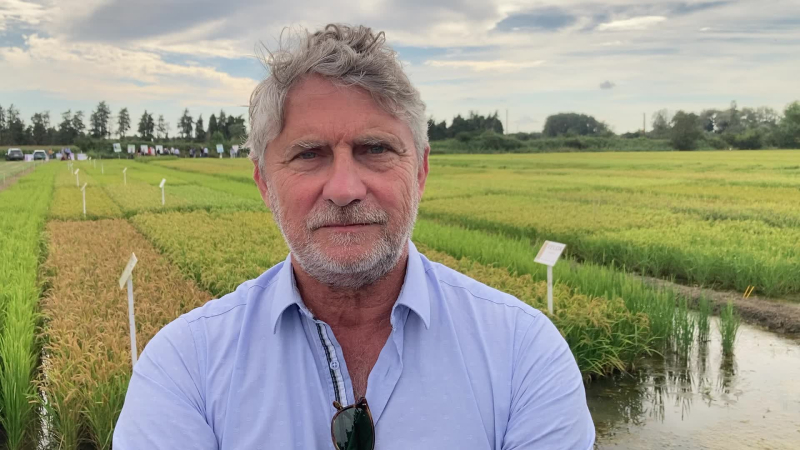The first robot for large-scale crops, presented to rice farmers in Camargue

The French Rice Center, based in Arles, presented the latest in robotics for agriculture. A powerful robot tractor, synonymous with a technological revolution for large-scale crops.
“On the computer, an artificial intelligence makes suggestions, and you will decide on a series of tasks. With a harrow, a seeder, whatever you want. It will go at the speed you choose or you will give it an appointment at a given time and it will adapt its speed.” Agxeed 5-115 T2 still lacks a real name. Adrien Arliaud, Vaucluse director at Claas, the dealer who took a stake in the Dutch start-up that designed the machine, admits “between us, we call it the crawler! “It's the first robot tractor for large-scale crops.””
The robotization of agriculture has already started in horticultural greenhouses and is beginning in the vineyards, but the potential for technological progress for rice growers in the Camargue is immense. In Fourques, in the Gard, the French Rice Center offered its traditional technical day, preceding the Arles rice fair, and marking the start of the harvest. “Here the plots are grouped together, this robot can work 24 hours a day. It consumes less than a conventional tractor, and pollutes less. Its tracks will compact the soil less and its precision is to the square centimeter”, continues the dealer.
Return to 20,000 ha
“We face recurring labor problems. In addition, in our professions subject to the weather, to very short harvest or work times, we cannot work 24 hours a day, while the robot can. We also have the challenge of attracting young people to agriculture and remaining competitive in our productions,” says Marc Bermond, a rice farmer in Saint-Gilles.
The 170 French rice farmers and producers, spread between Gard and Bouches-du-Rhône (with the exception of one from Hérault and one from Aude) are facing a major production challenge. This year, 13,700 hectares were put into cultivation. It was 12,000 last year, 10,000 the year before. The expected harvest is 80,000 tonnes. "We have the ambition to return to 20,000 ha. In the 60s, we went up to 30,000. It would be great if we became self-sufficient again in France", analysis Bertrand Mazel, president of the rice growers' union. The sector is able to increase its production without assistance: the storage and machining tools are already there.

The French Rice Center is conducting production trials for new varieties in Fourques, in the Gard.
The union and its technical center were audited as part of a ministerial mission on salt rises in the Camargue subsoil. “Without the rice fields and the circulation of fresh water, the Camargue would become a salt desert”, assures the rice grower. The question that sparked the powder keg last spring remains: the use, as an exception, of a new highly controversial molecule, Avanza. The union won in court, and organized itself to respond legally to other battles, while ensuring that it is taking action to limit phytosanitary products. “We don't know how to manage 100% of weeding without phytosanitary products, continues Marc Brémond.But we already have important solutions to reduce the quantity. We are requesting authorizations to treat by drones, for example. It has a much less impact than spraying. We target the plant to be destroyed better, and a drone mist, it does not water. We would use 35% less products."
And to welcome this rice management plan presented to the legislator and for which collective work was carried out, bringing together the Camargue Park, the chambers of agriculture of Gard and Bouches-du-Rhône. A plan that also includes all the research on varieties more resistant to climate change. In particular, when European authorizations allow it, hybrid rice from Asia. But French rice professionals never forget to mention that while 8 molecules are authorized in French rice fields, Asian countries use 34, particularly on basmati rice.
A robot at 350,000 euros
"The price will drop, that's for sure, and there will be aid". The French dealer has already sold two of its large-scale crop tractor robots in eastern France, emphasizing that the additional cost of purchase is reflected in use. “It works with an electric motor and a thermal generator. All electric would not be possible because it would require too many batteries, which would be heavy. But electricity is necessary for precision. In the event of an obstacle, it stops immediately. It is lighter than a conventional tractor and its power is 156 horsepower, which is equivalent to 250 horsepower of a conventional tractor. But here, no need to waste energy for the transmission, nor for the air conditioning of the cabin!” assures Adrien Arliaud.
I subscribe to read the rest




